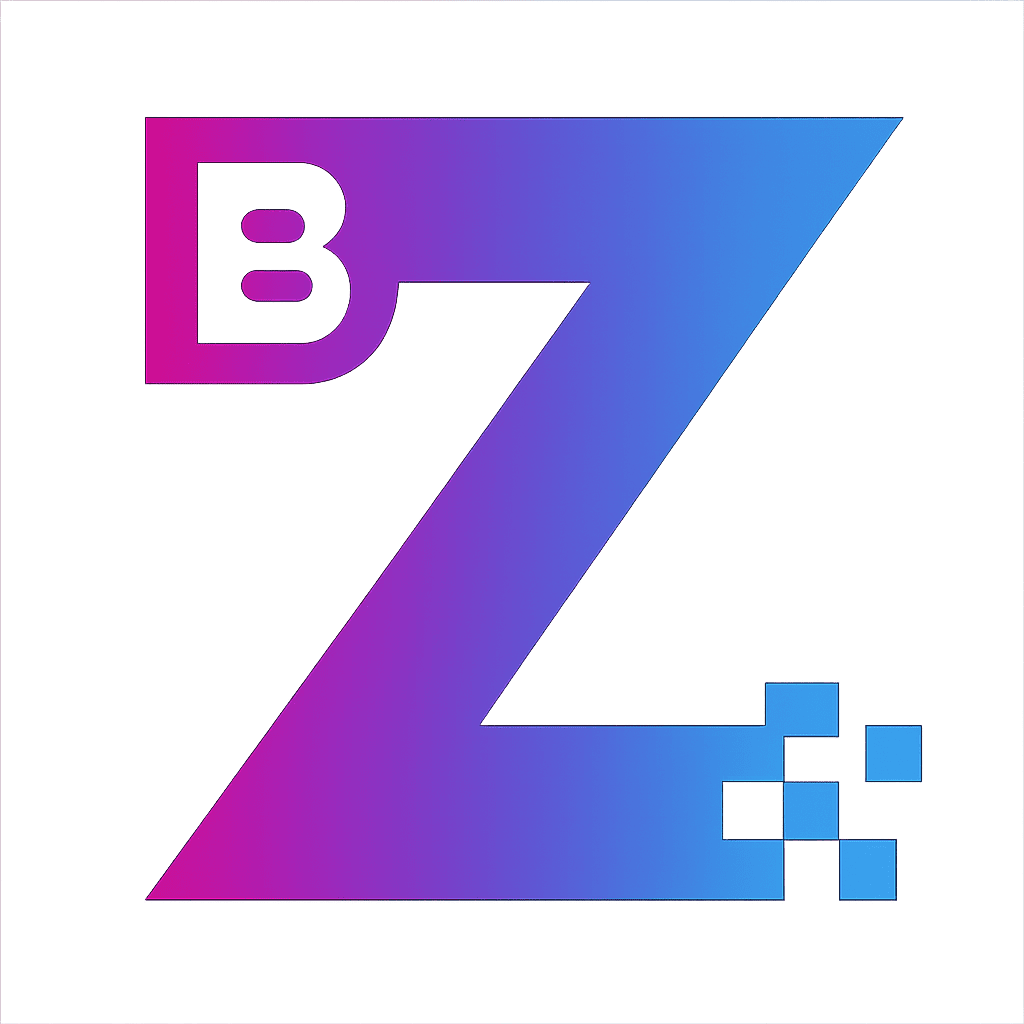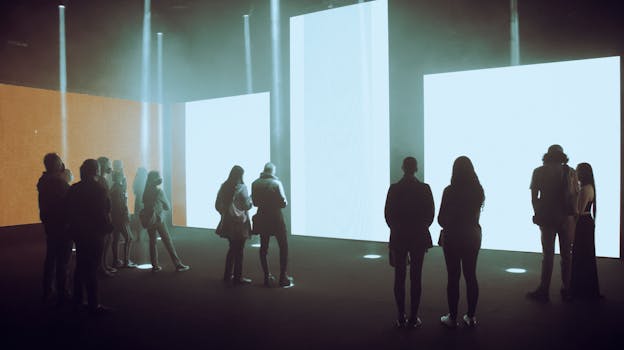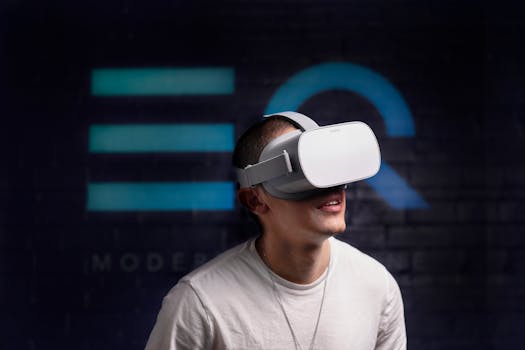Anúncios
Everywhere you look, screens glow with bold colors and ever-evolving stories. The push and pull between human imagination and tech drives what modern entertainment offers, creating fresh experiences unlike any decade before.
Innovators mix raw creativity with advanced design tools, making streaming series, games, and online art that surprise with each release. This interplay defines the heart of modern entertainment for audiences seeking novelty and delight, not just information or distraction.
Exploring this unique balance, we’ll reveal where creative sparks need structure, and why advances rely on wild, unfiltered ideas. Keep reading to learn how industry leaders shape the way we play, share, and dream in modern entertainment.
Creative Constraints Shape Breakthrough Moments
Designers achieve their best results by setting boundaries, not just building freely. When rules meet wild ideas, modern entertainment finds its sharpest edge, captivating audiences through order and surprise together.
Take a mobile game designer scribbling characters on a coffee napkin but restricted to 100 megabytes. They’ll learn resourceful animation shortcuts and deliver a smoother, more inventive experience than an unlimited canvas could offer.
Choosing the Right Rule: Mixing Limits With Freedom
Working with boundaries resembles a jazz band choosing a scale. Guidance reduces chaos but leaves plenty of room for individual style. This is where many successes in modern entertainment simmer and catch fire.
Layering creativity with digital limits means animators develop character expressiveness using only a handful of frames. The audience sees deliberate, punchy motion, proving that fewer choices can mean bolder results.
Studios will script entire comedy series knowing they’ll stream seamlessly on phones with limited data. The trick is letting playful ideas flourish within known technological fences, giving everyone a chance to shine.
Rapid Prototyping: Get Feedback Early and Refine
“Try it today—see what sticks, what’s clunky, what delights!” A modern entertainment studio leader tells her team this daily. Quick mock-ups encourage feedback before investing heavily in any path.
For instance, interactive stories grow quickly with this method because users playtest unfinished levels, shaping final plots and challenges. It’s like test-driving a car with the ability to move the steering wheel anywhere, anytime.
This cycle—build, test, improve—pushes modern entertainment creators to aim for solid, enjoyable core features, refining the magic recipe just in time for launch.
| Technique | Technological Limit | Creative Output | Takeaway |
|---|---|---|---|
| Minimalist Animation | Low storage | Expressive characters | Work within limits for maximum clarity |
| Short Game Levels | Quick device load | Fast-paced stories | Pacing keeps players engaged |
| Custom Sound FX | Limited audio channels | Signature atmosphere | Unique soundscapes stick in memory |
| Mobile-First Scripts | Screen size small | Concise dialogue | Messages reach users directly |
| Reactive Lighting | Graphics card limits | Mood shifts dynamically | Atmosphere evolves naturally |
Workflow Rules That Let Creative Teams Flourish
Reliable processes exist so artists and programmers don’t talk past each other. Workflow rules in modern entertainment ease stress and foster the surprising results audiences crave, without creative chaos or bottlenecks.
A scriptwriter delivers beats by Thursday, so animators storyboard on Friday. Routine isn’t boring—it builds trust that the next wild idea gets the support needed to thrive and actually makes it to the screen.
Development Syncs: Align Regularly for Smoother Delivery
Frequent meetings, even if just fifteen minutes, catch miscommunications early. When teams sync, people troubleshoot small bugs before they explode into major delays or creative do-overs.
- Schedule early morning check-ins—clarify who needs what done today and why the order matters in the bigger picture.
- Limit each topic to a single actionable point—leave depth for follow-ups, so momentum never stalls mid-swapping creative sparks.
- Use shared online boards—instant updates let every member adjust if tech evolves or new ideas surface unexpectedly.
- Flag blockers openly—saying “I’m stuck on this effect” gives the group permission to help, turning deadlines into shared, achievable goals.
- End meetings by restating today’s result—help creatives see how their piece fits the final modern entertainment product.
By sticking to predictable syncs, teams swap ideas confidently, leaving room for creative breakthroughs grounded in timely decision-making.
Creative Feedback Circles Boost Finished Results
Regularly inviting in feedback, not just at the end, prevents the heartbreak of late-stage overhauls. Modern entertainment shines brightest when creators course-correct early and often, keeping both tech and art polished.
- Share rough builds or unfinished cuts—let others react, so weak spots improve with plenty of revision space left.
- Focus critique on user experience, not personal taste—everyone aims for making products work well for modern entertainment fans, not just critics.
- Rotate who leads review rounds—keeps the group energized, ensures quieter voices spark new solutions the team never thought to try.
- Document action items—write down “tighten pacing in scene two” instead of vague suggestions, so artists know where to direct energy next.
- Celebrate quick improvements—recognize when early rewrites lift whole projects, making constructive feedback central to a well-oiled workflow.
These habits create a process where creativity and technology continuously overlap, letting both sides refine and inspire before work is completed.
Applied Storytelling Techniques for Powerful Digital Experiences
Careful narrative construction hooks users from the first click. By giving modern entertainment users relatable choices and rich worlds, creators turn watchers into passionate participants, deepening bonds with interactive media.
Scripts never meander. Instead, creators map out emotional arcs that keep every moment moving, like a strong current guiding boats toward new discoveries.
Branching Paths Deliver Meaningful Agency
When a player chooses whether to save a sidekick or chase the villain, modern entertainment offers a thrill far beyond passive watching. Each branch feels personal, encouraging repeat visits and lively fan debates.
This system isn’t just built for games, though. Streaming platforms now present story choices—”kiss or run,” “investigate or retreat”—making passive viewing feel like a two-way conversation.
By tracking user choices, creators tune future stories to popular paths. This strengthens loyalty while teaching writers how real users react, not just what they plan in isolation.
Micro-Moments Cement Emotional Connections
Small touches, like a background character glancing sideways or a musical cue ramping tension, make moments land harder. Modern entertainment benefits most when creators embed these micro-moments directly into pacing.
Imagine navigating an interactive series where a low bass note swells as you pick a dangerous path. Unspoken signals become as effective as dialogue.
Adding these cues takes extra effort, but viewers remember not just what happened but how it felt, prompting repeat viewing and word-of-mouth buzz.
Real-Time Data Makes Personalization Dynamic and Relevant
Data-driven design makes experiences feel hand-picked. Modern entertainment creators use real-time analytics to tweak content and tech settings, tailoring every session to the viewer’s context and tastes.
For example, music apps detect a user skipping upbeat tracks late at night, shifting the playlist to moodier songs. This attentiveness deepens the user’s connection to the experience and keeps them returning.
Adaptive Animation for Audience Preferences
Studios record what scenes spark conversation or cause viewers to pause. They use this intel to alter animation pacing, intensifying suspense or shortening dialogue scenes that drag.
Instead of guessing what will work, creators adjust based on actual engagement metrics. This makes modern entertainment far more responsive than classic media ever was.
As a rule, teams swap static sequences for modular ones. They create variations on key scenes, then serve the best-performing versions to future users.
Smart Scripting Keeps Content Fresh
Dialogue libraries let shows randomize jokes or responses. One script becomes many, increasing replayability for viewers and keeping conversations feeling spontaneous, not robotic.
Writers keep refining their libraries, listening for negative feedback or dull repetition, and updating with new lines or twists. The process never sleeps.
Personalization is no bolt-on bonus—it’s woven into story, animation, and tech from day one, making every modern entertainment session a bit of a surprise.
Rapid Technology Advancements Demand New Creative Skills
To keep pace with rising platforms and devices, creative professionals must evolve. Modern entertainment now asks teams to supplement storytelling with technical know-how, never relying solely on one core skillset.
Animators experiment with AI-powered brushes, while musicians compose with algorithmic loops—each experiment teaches new ways to layer technology with artistry.
Coding as a Creative Toolset
Writers who code don’t just hand off scripts; they prototype dialogue directly in interactive engines. This approach eliminates translation errors between departments and lets stories flex as technology evolves.
Sound designers now script real-time effects rather than export fixed tracks. A forest’s wind shifts loudly as a player turns, making modern entertainment worlds richer and more adaptive.
For creators feeling overwhelmed, a simple habit: dedicate fifteen minutes daily to learning one new tool. Small, consistent effort builds game-changing fluency over time.
Prototyping Across Disciplines
Level designers, narrative writers, and sound artists now build short sample experiences together, instead of waiting for one group to finish before the next starts. Each round surfaces problems and opportunities earlier.
The habit of cross-prototyping ends siloed thinking. It opens teams to advice from unexpected angles, producing surprises that only blended skillsets allow.
Peer review becomes daily routine—”try my build and punch up my music cue,” a teammate says over Slack. Modern entertainment thrives when feedback is quick, specific, and acted on immediately.
Audience Collaboration Redefines Content Creation and Enjoyment
Fans are more than observers—they create, remix, and influence modern entertainment directly. This collaboration gives creative teams a living focus group and helps keep products aligned with real-world interests.
Streaming influencers play emerging games live, offering unfiltered reactions that studios watch for instant feedback. Viewers suggest twists or challenge ideas, making content co-creation routine.
User-Generated Content Spurs Authentic Evolution
Short video apps prove fans shape what’s next. When designers support remix tools and easy export, users generate viral content, unintentionally beta-testing which features actually shine.
Developers shift the official product when a user mod or creative shortcut gains traction. This quality of listening places modern entertainment in constant motion, always tuned to what audiences discover on their own.
Once a user’s remix goes viral, teams recognize what resonates and expand on the idea in future releases, rewarding participation directly.
Community Events Drive Ongoing Engagement
Events like online concerts or real-time game jams gather fans, creators, and influencers together. The resulting energy sustains interest long after launch week, keeping modern entertainment active and evolving.
Hosting regular challenges or live Q&A sessions draws out expertise and creativity from fans. These events become marketing, research, and fun all at once, inviting everyone to play a role.
By spotlighting community achievements, creators validate and amplify the best grassroots content, turning fans into long-term evangelists and co-designers.
Moving Forward: Where Creative Imagination Meets Digital Progress
Tech and artistry fuse in modern entertainment in ways that were once unimaginable. Concrete workflows and feedback loops let imaginations soar without veering off course, while user data and direct collaboration keep final experiences sharp and relevant.
Practical habits—limit setting, sync meetings, rapid iteration—support creators and technologists in their shared goal: unforgettable, interactive, and evolving modern entertainment for every user, on every screen.
Look ahead and experiment; bring playful ideas to the digital table and use tech as your tool, not your barrier. That’s how the richest new chapters in modern entertainment get written—together, day by day.



